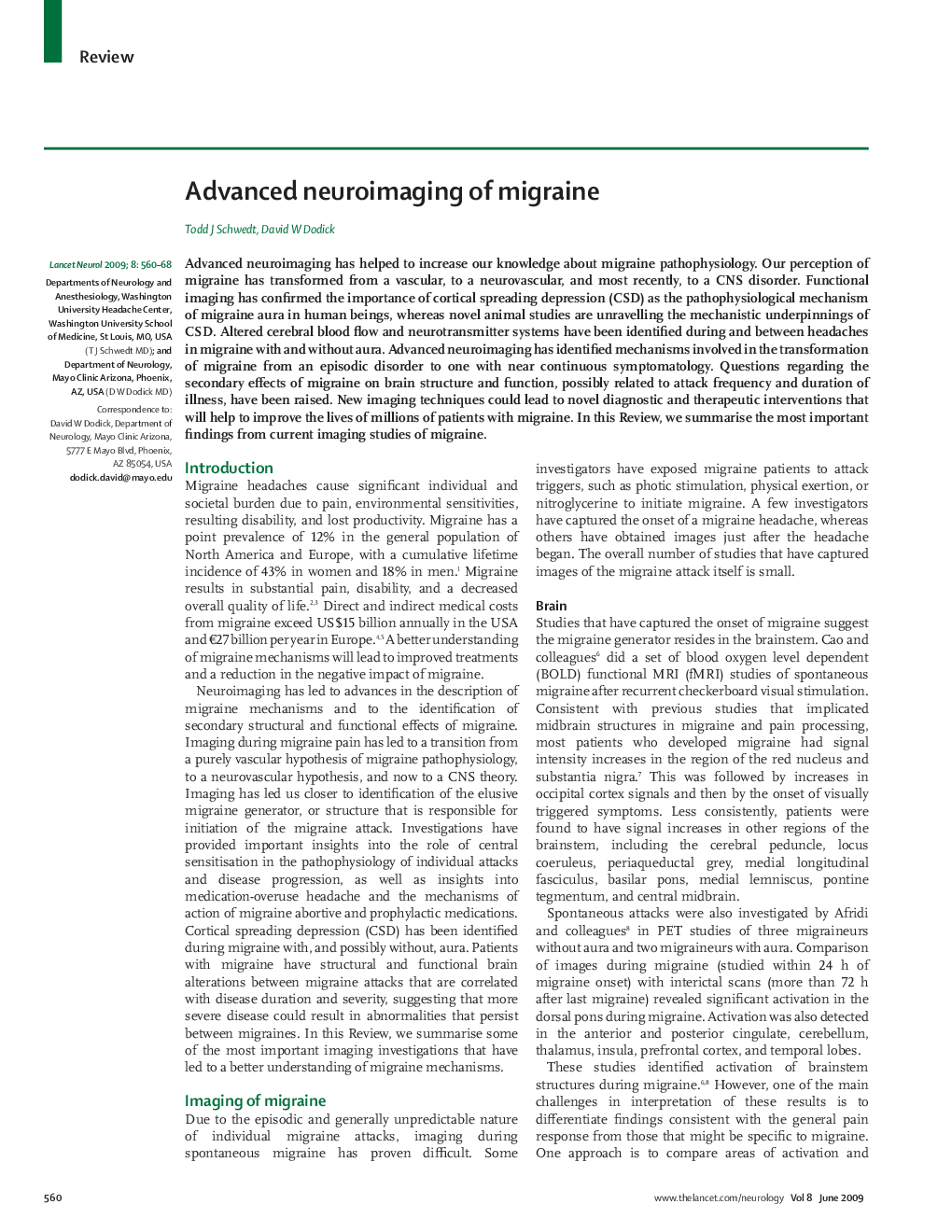| Article ID | Journal | Published Year | Pages | File Type |
|---|---|---|---|---|
| 3067047 | The Lancet Neurology | 2009 | 9 Pages |
SummaryAdvanced neuroimaging has helped to increase our knowledge about migraine pathophysiology. Our perception of migraine has transformed from a vascular, to a neurovascular, and most recently, to a CNS disorder. Functional imaging has confirmed the importance of cortical spreading depression (CSD) as the pathophysiological mechanism of migraine aura in human beings, whereas novel animal studies are unravelling the mechanistic underpinnings of CSD. Altered cerebral blood flow and neurotransmitter systems have been identified during and between headaches in migraine with and without aura. Advanced neuroimaging has identified mechanisms involved in the transformation of migraine from an episodic disorder to one with near continuous symptomatology. Questions regarding the secondary effects of migraine on brain structure and function, possibly related to attack frequency and duration of illness, have been raised. New imaging techniques could lead to novel diagnostic and therapeutic interventions that will help to improve the lives of millions of patients with migraine. In this Review, we summarise the most important findings from current imaging studies of migraine.
